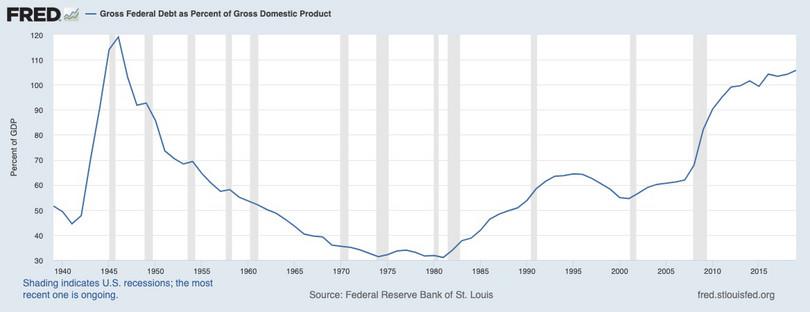Financing American government
2 The Treasury
- US Department of the Treasury
- The executive agency responsible for promoting economic prosperity and ensuring the financial security of the United States. Source: U.S. Department of the Treasury.
The US Department of the Treasury is the government agency responsible for the ‘disbursement of payments to the American public, revenue collection, and the borrowing of funds necessary to run the federal government’.
Like households, firms, and other organizations, the government receives and spends income, borrows to cover the difference, and repays debt as it comes due. Tax revenues flow in, and expenditures on unemployment, disability, and social security benefits, building and maintaining infrastructure, weapons for the military, administrative salaries, and all manner of other payments authorized by Congress flow out.
When revenues are insufficient to cover expenditures, the government has a budget deficit and must borrow to finance the shortfall. This leads to an accumulation of debt on which interest must be paid. If revenues exceed expenditures, there is a budget surplus and a fall in the total amount of outstanding debt.
Annual surpluses and deficits for the United States federal government since 1939, relative to the nation’s GDP, are shown in Figure 1. We see deficits in almost all years, with especially large deficits during recessions (shown in grey) and times of war. The deficit in 2020 is projected to be $3.7 trillion, or about 18% of the GDP, which would be the largest recorded since the end of the Second World War.

Figure 1 United States federal surplus or deficit as a percentage of the gross domestic product (1939–2019).
‘Federal surplus or deficit as a percentage of the gross domestic product [FYFSGDA188S]’, Federal Reserve Bank of St. Louis and US Office of Management and Budget, retrieved from FRED, Federal Reserve Bank of St. Louis, 25 November 2020.
When the government borrows money to finance a deficit, it accumulates debt. Figure 2 shows the federal debt as a percentage of the GDP since 1939. We see that when the deficit is large, the debt tends to rise. This is especially clear during the Second World War and the global financial crisis. Once 2020 is behind us, we will see that the public debt of the United States will be greater than at any time in modern history.

Figure 2 Total public debt as a percentage of the gross domestic product (1939–2019).
‘Gross federal debt as a percentage of the gross domestic product [GFDGDPA188S]’, Federal Reserve Bank of St. Louis and US Office of Management and Budget, retrieved from FRED, Federal Reserve Bank of St. Louis, 25 November 2020.
As Figures 1 and 2 make clear, the ratio of debt to GDP declined steadily for several decades after the war, despite the fact that there were deficits in most years. This is because the economy was growing faster than the debt was accumulating over this period.
It appears, therefore, that the government of the United States can have a budget deficit year after year without encountering problems financing it. Is this really the case? And if so, what makes it possible? To answer these questions, we first need to look at the mechanics of the federal borrowing process, and the role of the nation’s central bank, the Federal Reserve.
Question 1 Choose the correct answer(s)
Use Figures 1 and 2 to select all of the statements below that are correct.
- From 1990 to the present, the US government ran a surplus in four years: 1998, 1999, 2000 and 2001.
- The chart in Figure 1 measures surpluses and deficits as a percentage of GDP not in trillions of dollars.
- Between 1970 and 1982, the US debt to GDP ratio stayed close to 30%.
- You can see that the government ran a deficit in 1962 in Figure 1 and you can see the reduction in the debt to GDP ratio in Figure 2.
Exercise 1 Debt as a percentage of gross domestic product
Why do we ‘normalize’ and measure debt in relation to GDP?

